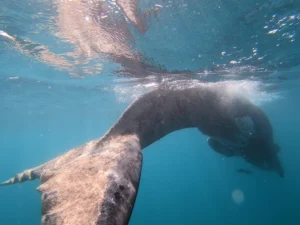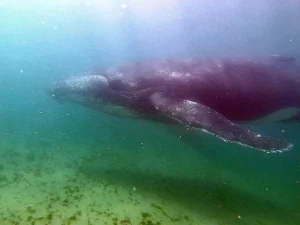Stingrays are a diverse taxon of cartilaginous fish closely related to sharks. They exist within eight different families consisting of approximately 220 described species, with fossil records dating 150 million years back to the Jurassic period. Although grouped together in the suborder Myliobatoidei, stingray families are extremely diverse with forms varying greatly across these groups. Families include deepwater stingrays (Plesiobatidae) whiptail rays (Dasyatidae), river stingrays (Potamotrygonidae) and eagle rays (Myliobatidae), to name a few!
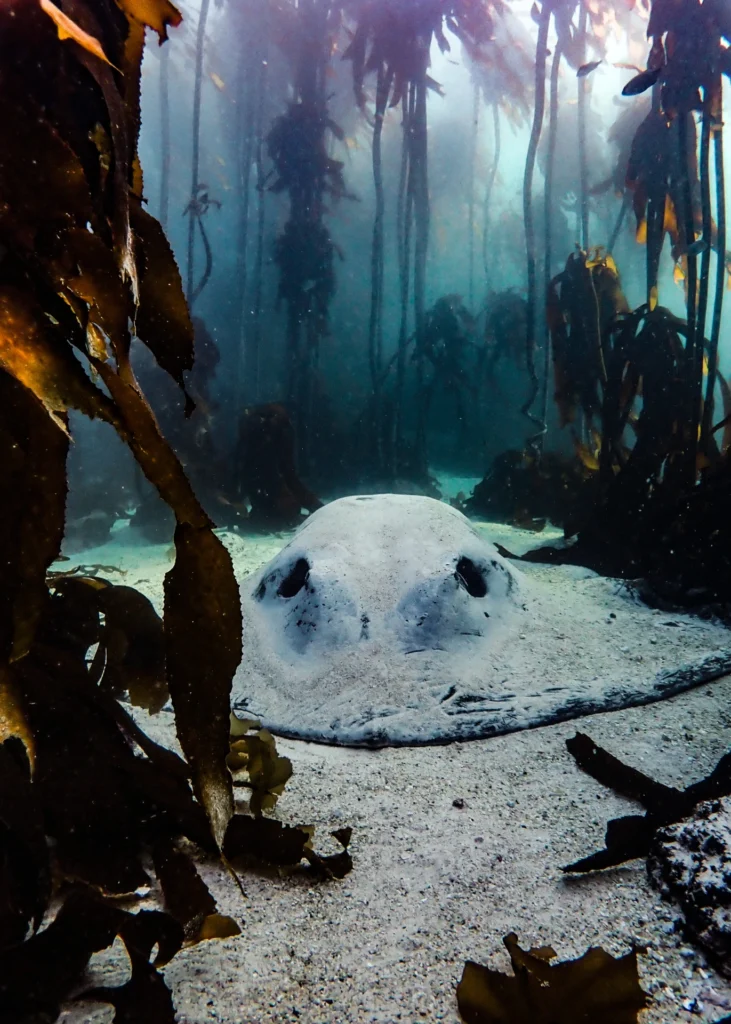
As indicated by their taxonomic diversity, stingrays are a remarkably versatile group which inhabit a wide range of aquatic environments, from tropical coral reefs to muddy estuaries and freshwater rivers. Stingrays are primarily benthic, meaning they dwell on the ocean floor or riverbeds. They possess an impressive ability to conceal themselves in sandy or muddy substrates, their skin often mottled or patterned providing effective camouflage against potential predators and helping them to ambush prey. Specialised facial cells allow stingrays to detect electrical signals from their target and assist them with hunting in poor visibility. As opportunistic feeders, their diet consists primarily of small invertebrates such as crustaceans, mollusks, and worms. Some species, however, have specific diets that include filter-feeding on plankton or consuming sizable prey such as clams and crabs. In turn, stingrays are preyed upon by larger carnivorous fish, such as sharks, as well as seals and killer whales.
Most species of stingray are ovoviviparous, meaning they give birth to live young. Reproduction takes place sexually via internal fertilisation, whereafter female stingrays develop embryos internally, providing them with nourishment until they are ready to be born. This reproductive method allows for greater protection and survival rates during development. The female will typically bear a litter of pups, which are self-sufficient shortly after birth and quickly adapt to their environment. Stingrays play an important ecological role and are considered ecosystem engineers due to their ability to modify their environment.
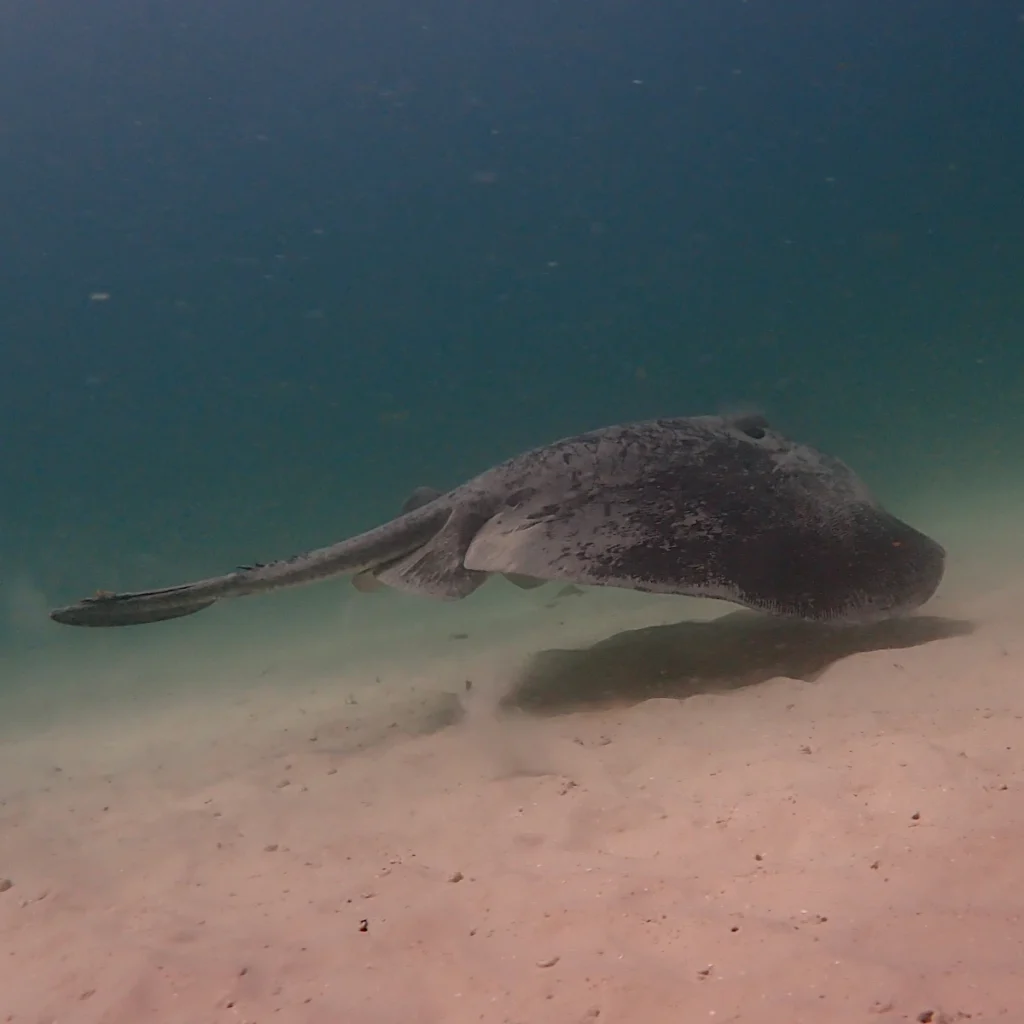
By stirring up sediment with their bodies and tails while foraging, they enhance the oxygenation of the substrate and facilitate nutrient cycling. This in turn benefits other organisms living within the same habitat, including microorganisms and benthic invertebrates.
Stingrays mature late and are slow growing, resulting in a relatively low fecundity rate, and therefore low levels of reproduction, leaving them susceptible to various threats from human activities. In East Asia, stingrays are targeted for the perceived medicinal properties of their gill plates. In conjunction to intentional fishing for the gill trade, stingrays are also caught incidentally as bycatch, which poses a significant threat to their populations. Additionally, habitat destruction, pollution, and climate change present pertinent challenges to the conservation of stingray populations across the globe.
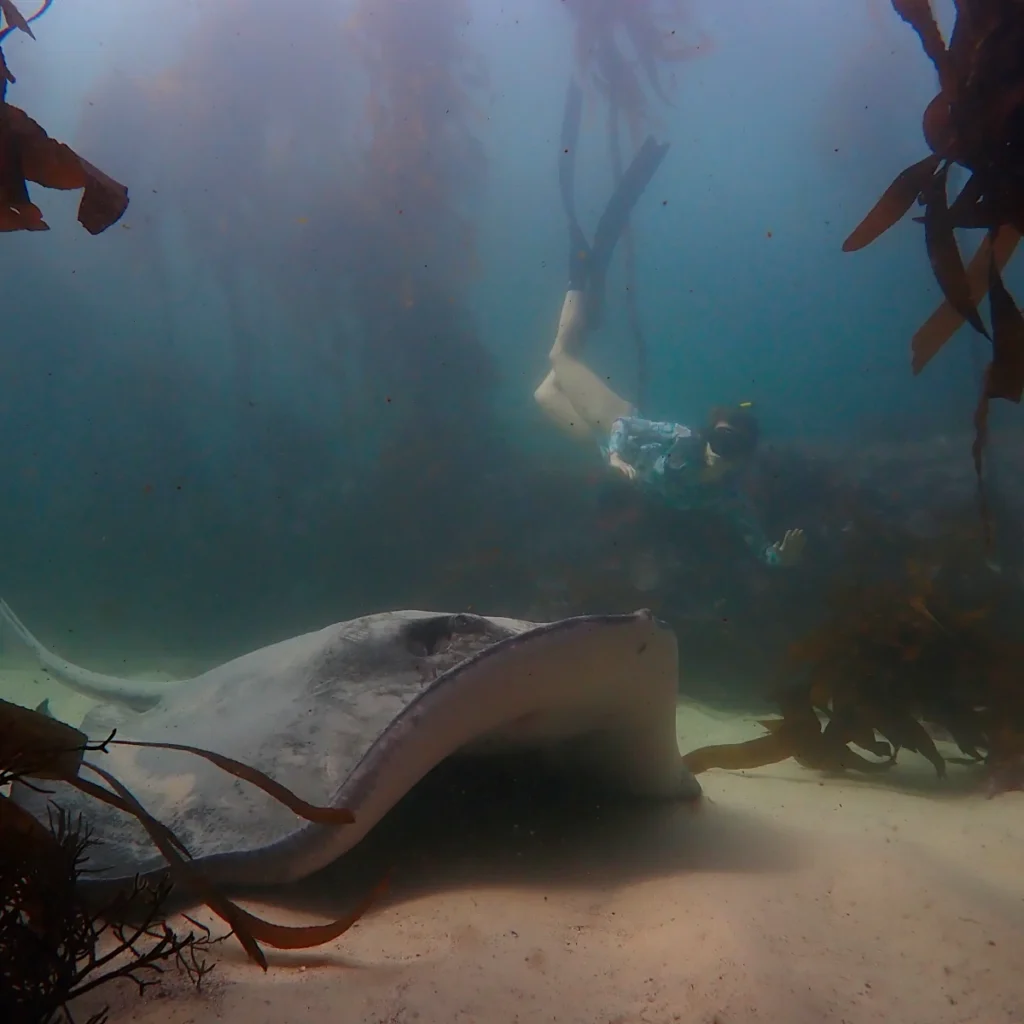
The short-tail stingray (Dasyatis brevicaudata) is a species commonly observed in the waters of Cape Town, South Africa. It possesses a streamlined body and can attain lengths of up to 2.5 meters, with a weight reaching several hundred kilograms. The distinguishing characteristic of this species is the venomous stinging spine located at the base of its tail, which serves as a defensive mechanism. Although encounters between humans and short-tail stingrays are infrequent, the potential harm associated with their venomous sting necessitates caution when interacting with these creatures. Studying the behaviour and ecological role of the short-tail stingray in its natural habitat contributes to our understanding of the marine ecosystem in Cape Town. We occasionally spot these amazing creatures when freediving and snorkeling over sandy areas, notably at Long Beach, Glencairn and the outer right channel at Windmill Beach.
Stingrays are both a fascinating and functional component of aquatic fauna, and important influencers of their habitats. In addition to their ecological significance, stingrays are also greatly valued due to their natural beauty and grace in the water, and are often sought after by divers across the globe. The need for further research enabling the effective conservation of stingrays is fundamental to safeguard the future of these magnificent species.

